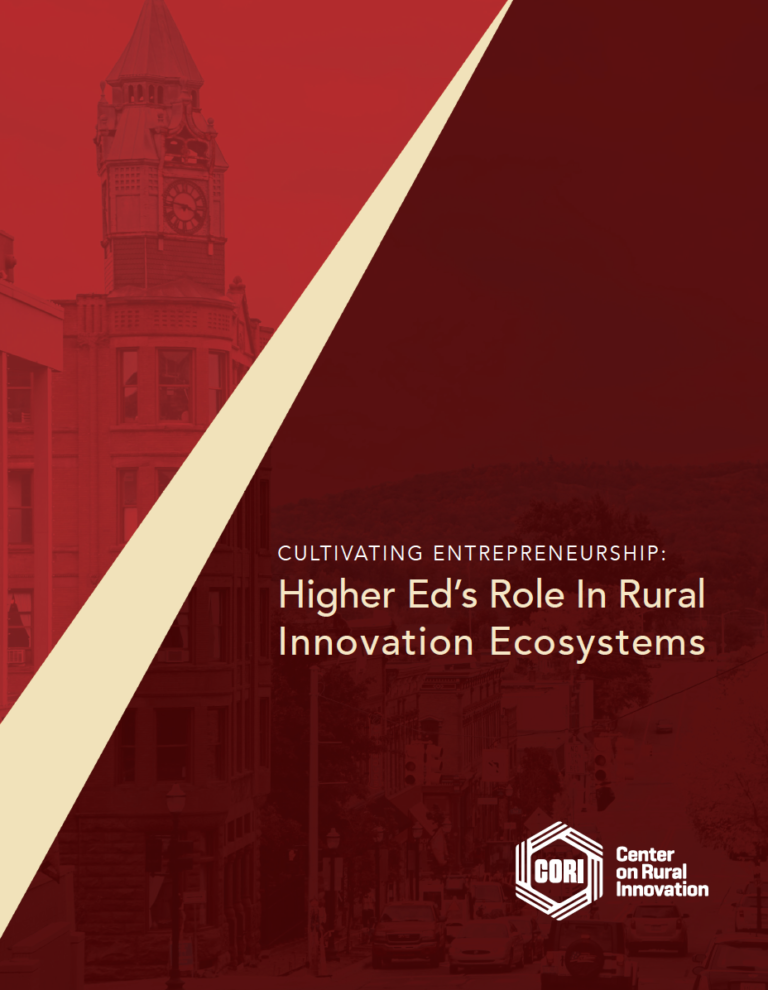
Institutions of higher ed in rural America
Innovation and tech economies are the key to rural America’s future — and rural institutions of higher education (IHEs) can play a huge role in building the ecosystems that support that work. While many rural communities have been left out of the country’s digital revolution, higher ed institutions bring the resources and expertise that can power small towns’ transition into tech-based opportunity.
This ecosystem building work is especially important given the COVID-19 pandemic, which is taking a severe toll on IHEs and the communities they serve. Some schools have closed permanently, and one estimate places 20% of all colleges at severe market risks. Even for those that can stay open, they are forced to navigate an entirely new landscape, with decreased revenues and health restrictions that change the nature of campus life.
Yet, with unemployment skyrocketing nationwide and millions of families facing financial uncertainty, IHEs role as community economic anchors will become more important than ever. Especially in rural towns with struggling economies which the virus has compounded, will be central to community vitalization.
In partnership with the Sorenson Impact Center, we recently had the privilege to profile rural IHEs across the country doing creative work to promote technology, innovation, and entrepreneurship on their campus and in their communities. Importantly, each IHE tailored their work to their local context, using programming to meet real community needs.
But across all 10 institutions we profiled, we identified four key pillars of innovation ecosystem building that rural IHEs can play a key role in driving:
Formal accelerator and incubator programs
These programs directly support entrepreneurs, providing knowledge and resources to help them start and scale their businesses. SUNY Cobleskill, for example, partners with the local nonprofit Center for Agricultural Development and Entrepreneurship to drive funding to startups; the partnership has facilitated $600,000 in funding to businesses and served 500 entrepreneurs.
Physical space and co-location
These spaces enable all-important intersections, provide accessible onramps, and help create a visible place for entrepreneurial culture to develop. Colby College provides a great model, making extensive investments in their downtown Waterville, Maine area, while piloting a downtown incubation space where teams of students are embedded in the community to work on small business startups, often in the tech sphere.
Digital skilling programs
These programs provide onramps, build an often diverse pool of talent, and provide knowledge and resources for entrepreneurs themselves. Inspire Idaho, created by the University of Idaho Coeur d’Alene Center, is a volunteer-run program that supports area adults seeking opportunity in the tech economy by teaching them the Apple iOS programming language and how to build an app.
Collaboration within and across institutions
Collaborations let the university play the role of champion and convener, by telling stories, facilitating intersections, leveraging resources, and building culture. Northern Michigan University exemplifies this through SISU: The Institute for Innovation at NMU, which brings together students and faculty from all disciplines and gives them the “freedom to be visionary and entrepreneurial.”
Adopting these four pillars of innovation ecosystem building can put rural IHEs on a pathway to revitalizing their communities in the COVID era and beyond. The rural IHEs we profiled — and many others across the country — are proving that when institutions make strategic decisions aimed at the economy of the future, they can serve their communities, their students, and themselves.
As we move forward in the COVID-19 landscape and beyond, it’s essential that more rural IHEs continue this work, leveraging their resources and community connections to build sustainable innovation ecosystems.